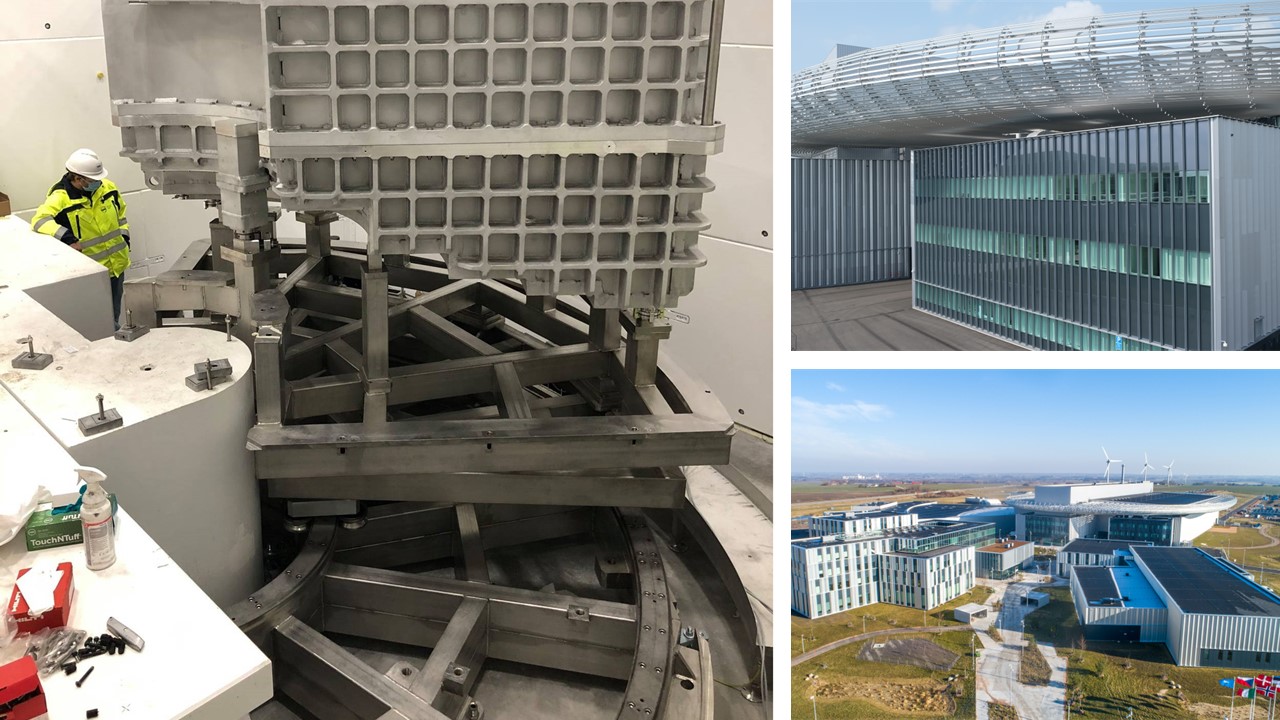Neutron Instrumentation

The BIFROST spectrometer at ESS
DTU Physics is heading the construction of the BIFROST spectrometer at the European Spallation Source (ESS) in Lund, Sweden. The construction project runs from 2016 to 2025. BIFROST is expected to enter the hot commissioning phase by the end of 2025, and to be ready for external users at the start of the ESS user program in 2026. The BIFROST construction project is a multi-partner collaboration between:
- DTU Physics
- The University of Copenhagen (Niels Bohr Institute), Denmark
- The Paul Scherrer Institute (PSI), Switzerland,
- Laboratoire Léon Brillouin (LLB), France
- The Institute of Energy Technology (IFE), Norway.
- The European Spallation Source, ESS
In addition, the project benefits from input from EPFL Lausanne. The total construction budget of BIFROST is 13.45 M€.
What is BIFROST?
BIFROST is an innovative indirect time-of-flight spectrometer with multi-energy analysis.
Situated 162 meters from the spallation target of ESS, the instrument is capable of using the entire long pulse of ESS. This guarantees a very high incident neutron flux (Up to 1010 neutrons per second per cm2, over a bandwidth of 1.7 Å in the highest flux operational mode of the instrument) while maintaining good and flexible incident energy resolution.
On the secondary spectrometer side of BIFROST, neutrons of five different energies will be energy-analyzed simultaneously (exploiting the favorable transmission through the graphite analyzer crystals) over a broad range of horizontal scattering angles (See picture). This design makes BIFROST optimal for experiments in which the sample of interest is subject to high magnetic field and/or high pressure.
The combination of very high incident flux and the ability to probe the sample scattering function S(Q,ω) efficiently is expected to allow BIFROST to out-perform present world-leading instruments by more than a factor of 30.
The science case of BIFROST
The science case of BIFROST centers primarily on problems related to magnetism and quantum materials. Examples include strongly correlated electron materials e.g. high-temperature superconductors, quantum magnets, multiferroics etc. However, the very large flux of BIFROST will also enable novel geoscience and bioscience.
Compared to the other instruments in the ESS spectrometer suite, the particular strength of BIFROST is experiments under high magnetic fields and high pressure.
https://europeanspallationsource.se/instruments/bifrost
Germanium wafers for neutron monochromators
Germanium crystals are in common use as monochromator crystals at neutron scattering facilities.
We offer to perform deformation of germanium wafers, soldering of several such wafers to produce slabs, and finally cutting of these slabs into crystalline tiles that can be used for composite germanium monochromators.
The Germanium crystals we have produced are in use at neutron facilities all over the world. Please contact Niels Bech Christensen for more information and quotes.

Contact
Rasmus Toft-Petersen Senior Researcher rasp@fysik.dtu.dk
Niels Bech Christensen Senior Scientist nbch@fysik.dtu.dk